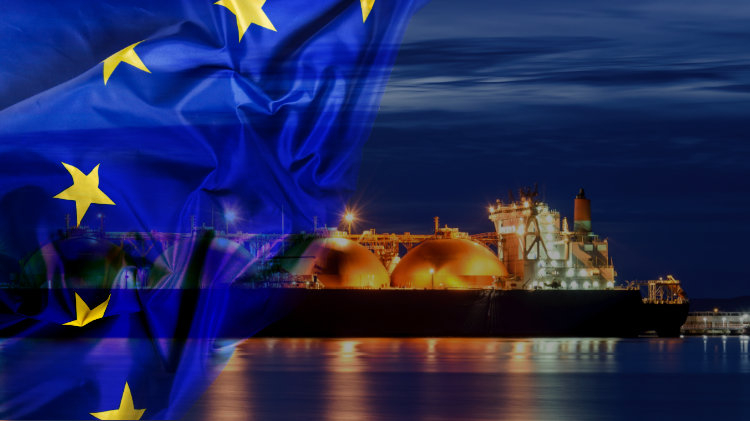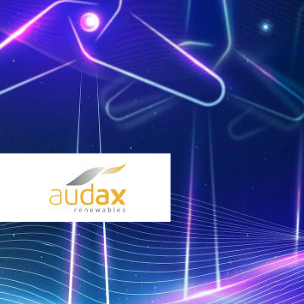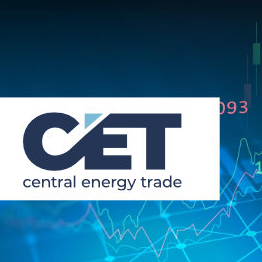
July 13, 2009 might not be one of those “Where were you?” days, but if you work in the energy industry in Europe, you may well be able to associate the date with an actual event. That day, the European Union issued Directive 2009/73/EC, sometimes referred to as the Third Energy Package, “concerning common rules for the internal market in natural gas,” including liquified natural gas (LNG). Over a decade later, that directive is still in force, but is it effective? The answer is: there is both room and need for improvement.
Challenging the status quo
Permitted by national law, member states have oversight of terminal operations and practices, but supervisory principles vary greatly between the individual countries. In effect, there are no harmonized rules in place for LNG terminal operation within the EU, similarly to other entry (import) points towards the common market. As a result, its markets have some faults that hamper healthy, productive competition between both LNG terminals and LNG market operators. These differences are the most tangible in less liquid regions of the European gas market.
This is the key finding of a joint study prepared for the European Commission by Trinomics, REKK Foundation, and Enquidity, published in May 2020. The authors of the paper entitled “Study on gas market upgrading and modernisation - Regulatory framework for LNG terminal” propose recommendations on how those barriers to competition could be overcome through improved regulation.
But before we take a closer look at the experts’ findings, let us describe in some detail the significance of LNG and its niche segment, small-scale LNG (SSLNG).
LNG, pure and simple
Given the CO2 emissions reduction targets and the decrease in indigenous gas production, LNG is a principal source of energy for Europe. Natural gas is the cleanest and most versatile of fossil fuels, which, through liquefaction, can be made accessible to the European market from gas reserves around the world. The diversity of sources, routes and competition can guarantee a secure supply of LNG for the whole of Europe. Indeed, EU imports have doubled over the past two years, and the LNG share in all EU gas imports rose by 11% from 2018 to 2019. It then remained steady in early 2020, the year that witnessed a decline in demand due to the COVID-19 pandemic.
LNG terminals have been operating in Europe since 1969, and the related business has greatly evolved in recent years. There are several projects in the works all across the continent, with the latest addition to the network being the terminal on the island of Krk in Croatia, which commenced operations in January 2021. To attract imports, terminal operators have been expanding their services and their product range to meet their customers’ needs. With their number and their capacity growing, a competition has emerged between LNG terminals. That competition is twofold: shippers vie for delivery spots while terminals want to attract shippers to their respective facilities. For this competition to continue and for LNG infrastructure to develop further, a stable regulatory environment is required. This is especially true for the SSLNG market.
A segment of no small consequence
SSLNG is sourced from a large-scale terminal or from a small-scale liquefaction facility. Market players that specialize in SSLNG buy gas from importers and contract loading services to have LNG delivered which they then redistribute to their customers, typically in the industrial and transportation sector. Due to the expectation that environmental regulations will become ever stricter, and in order to serve end users that are not connected to the main pipeline or are located in remote areas, the SSLNG market is developing fast: more and more terminals are now considering extending their portfolios with SSLNG products.
Small-scale players select terminals based on the availability and the cost of the services required as well as on commodity price. For this reason, it is vital for them that LNG terminals have contracts with several shippers so that they can negotiate an ideal deal. In addition, tariffs for truck loading and the location of the terminal also have an impact on their choice of terminal. Since fully functional truck loading services are not available everywhere, SSLNG providers often have to transport over long distances, which presents a couple of challenges. First, owing to the unavailability of specific infrastructure or services in many EU countries, transporting LNG from terminals to small-scale markets may be problematic. Second, no harmonized standards exist that apply across the EU.
As we can see, there is a pressing need for some fundamental changes to take place in the European LNG sector and its niche industry, the SSLNG market. The study mentioned above proposes some measures that, when implemented, could ensure that those changes are effective and beneficial for all parties involved.
What is holding LNG back
Lack of a comprehensive regulatory framework, the experts conclude, is at the core of the problem. Terminals in some member states (e.g., France, Italy, Spain) compete nationally, while the ones in strongly interconnected markets also compete at supra-national level (e.g., Spain-Portugal, France-Belgium-Netherlands). By ensuring a level playing field and regulatory practices (e.g., tariff principles) that are valid across regions, competition distortion could be avoided and system efficiency maximized. According to the study, these are some of the areas that need to be addressed:
- terminal capacity allocation: currently, a few users are favored based on long-term contracts; short-term access is not easily accessible
- transparency in information provision (concerning tariffs, capacities, services, contractual terms)
- flexible and small-scale services at LNG terminals: not all terminals offer unbundled services; lack of interest in supplying the SSLNG market due to its low overall volumes
Potential measures to be considered include maximizing and optimizing terminal capacity, implementing a centralized transparency platform, standardizing and extending products and services. To allow competition and further development, particularly in the SSLNG segment, it is essential to ensure EU-wide regulatory approval for the services and the information provided by local system operators (LSO).
In a related report, Frontier Economics, one of the largest European economic consultancies, echoes some of the findings of the study, calling for the modernization of the regulatory framework for LNG terminals, especially with regard to third party access. To discuss the findings of the study cited above and the issue of access to European LNG terminals, an online workshop hosted by REKK Foundation took place in February 2021. It featured EU policymakers and industry experts who all agreed that the liquidity of the EU gas market, the improvement of the existing regulatory framework, and more standardized regulation in the SSLNG segment are critical to a modern and thriving LNG industry.
As far as SSLNG is concerned, IT-based solutions involving virtualization and capacity auctions will take center stage.
The road ahead for SSLNG
An innovation that greatly benefits market players by opening up new trading possibilities is the virtualization of products and services. Operators of networked assets can unlock vast potentials this way as MIBGAS, the organized gas market operator for Spain and Portugal, has demonstrated.
Since April 2020, the LNG in all of Spain’s six terminals has been located in a single virtual storage tank, enabling interested parties to trade without knowing the physical location or source of the LNG. Buying and selling this way increases both the number of counterparties and the liquidity of the market. Indeed, three months later, all slots for the next 15 years were sold to a large number of shippers, traders and retailers - more companies ended up owning capacity rights. By publishing the prices negotiated during the exchange of LNG, MIBGAS also contributes to the increase of market transparency.
Allowing LSOs across the EU to offer such virtual conversion services is a key objective of the industry. Sourcing LNG from gas hubs such as the one in Spain enables retailers to benefit from higher levels of competition and market-based prices. Developing and implementing a platform for SSLNG bookings so that slots at terminals that offer truck loading and ship loading can be booked is also crucial.
To meet that demand, we at Navitasoft have developed a user-friendly, customizable and fully online capacity booking platform, Capacity Auctioning-OS, which supports allocation for both standard and non-standard capacity products. Well-suited to the needs of LNG terminal operators in general and SSLNG in particular, our platform was designed to meet the requirements of market regulations while applying the best industry practices.
Experience a booming and more competitive gas market with the help of our in-depth knowledge of the industry and our leading-edge expertise in IT.




